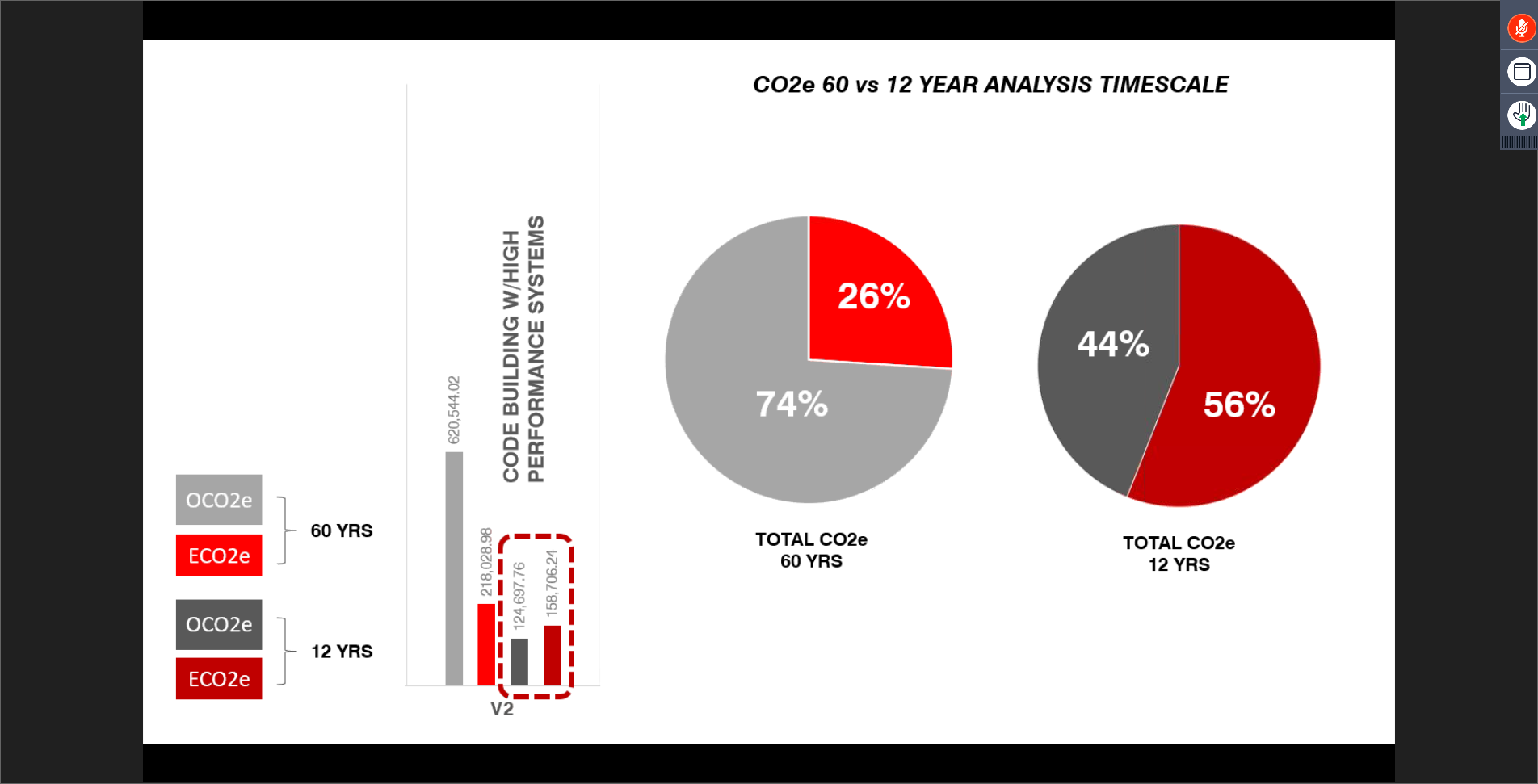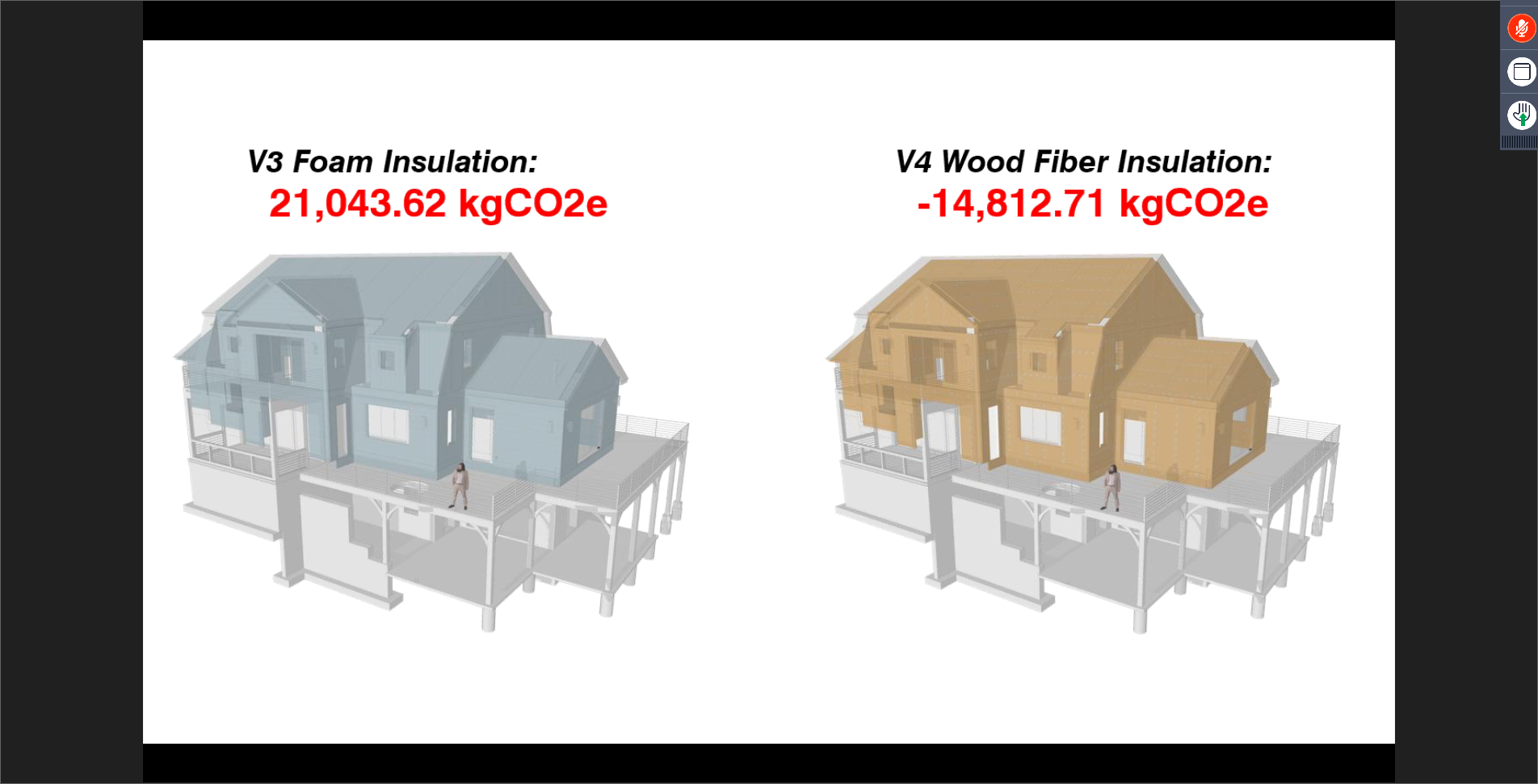Webinar Recap: “Spaghetti Carbon-Era: Disentangling Operational and Embodied Carbon”
Dear Readers,
William and I had the opportunity to listen in on a webinar provided by the Passive House Institute of the United States (PHIUS) on limiting embodied carbon in buildings: “Spaghetti Carbon-Era: Disentangling Operational and Embodied Carbon.” Admittedly, I just got the pun of the title…which is all the more humorous if you were to have seen their intro presenting page being that of pasta in a white sauce with bacon.
This seminar was very helpful in reiterating the importance of taking a holistically sustainable approach in home building and living. Not only should the home be environmentally friendly and energy efficient during its usage, but also in its construction and sourcing of materials. The ‘environmentally friendliness’ here is measured by the amount of carbon a home is responsible for emitting. PHIUS standards make a home accountable for its carbon footprint in its operation alone: as in, how much energy the home needs to function once it is already built. This they call “operational carbon” or, “OCO2e.” In the webinar, they expressed that the home has an even larger carbon footprint when its “embodied carbon” or, “ECO2e” is taken into account. Embodied carbon is the amount of carbon that is emitted in the overall construction of the home: from the harvesting, manufacturing, and transportation processes of all of the home’s required building materials. That pink fluffy fiberglass insulation and wooden studs and concrete foundation and drywall has to be made out of something and transported from somewhere…all of the materials have their own carbon footprints which then contribute to the home’s overall embodied carbon.
Two of the presenters, Ilka Cassidy and Steve Hessler, founded a business called “Holzraum System, LLC.” Within their business, they did their own study of how much of a home’s carbon footprint is operational and how much of it is embodied. They used five different homes as case studies.
Home One: built to meet 2009 building code
Home Two: built to meet 2009 building code with high performance systems
Home Three: built to meet Passive House standards, but with a high usage of foam
Home Four: built to meet Passive House standards, but with a low usage of foam
Home Five: built to meet Passive House standards, but with no foam.
“CO2e 60 vs 12 Year Analysis Timescale.” Credit: PHIUS Webinar, “Spaghetti Carbon-Era,” 23 March 2020.
They compared embodied carbon in ratio to operational carbon in 12 year and 60 year time spans. The above timescale analysis shows House Two, which is built to code but uses high performance systems. When looking at embodied and operational carbon ratios at a 60 year mark, operational carbon (responsible for 74% of the home’s total carbon emissions) far outweighs the embodied carbon emissions (26%). However, we don’t have 60 years to reverse climate change…so, they looked at the ratio at a 12 year time mark. Within 12 years, embodied carbon has a much higher and immediate impact on the environment. This proves that, given the urgency of climate change, we need to take into consideration not only the energy performance of our buildings, but how and with what we build our buildings now.
They also found that House Five (built to meet Passive House standards, but with no foam) had less embodied carbon than the other study houses due to two key elements: off-site manufacturing and using mostly wood as a building material. The walls and roof of House Five were CNC routed in a facility which mass produces walls, floors, and roofs. Mass production allowed for there to be less wasted wood, as well as time in the construction of the home. They also used wood fiber insulation for House Five, which, as seen in the ‘Foam Insulation vs. Wood Fiber Insulation’ image below, resulted in a negative carbon output! Instead of trying to be less hurtful to the environment in relation to carbon emissions, wood fiber insulation actually allows the home to give to the planet by sequestering carbon. However, they did take the time to mention one critical detail involving wood usage: in order for there to be a true sequestering of carbon, and for the home to be holistically sustainable, the wood must be certified sustainably sourced (such as certification from the FSC).
“Carbon Output of Foam Insulation vs. Wood Fiber Insulation.” Credit: PHIUS Webinar, “Spaghetti Carbon-Era,” 23 March 2020.
Going back to that plate of spaghetti, all of the components of building a sustainable home are interwoven and dependent upon the other. In order for the home to have a small, zero, or even negative, carbon footprint, the building of the home and its physical usage must be taken into account. This free webinar provided by PHIUS was certainly helpful in verifying a few of our current hopes and future applications in our own home.
Thank you for reading! Stay tuned for further research!
Sincerely,
Shelby Aldrich
Salamon, David, Ilka Cassidy, and Steve Hessler. “Spaghetti Carbon-Era: Disentangling Operational and Embodied Carbon,” Passive House Institute of the United States. Webinar. 23 March 2020.
© 2020 Sustaining Tree
© 2020 Sustaining Tree



0 Comments